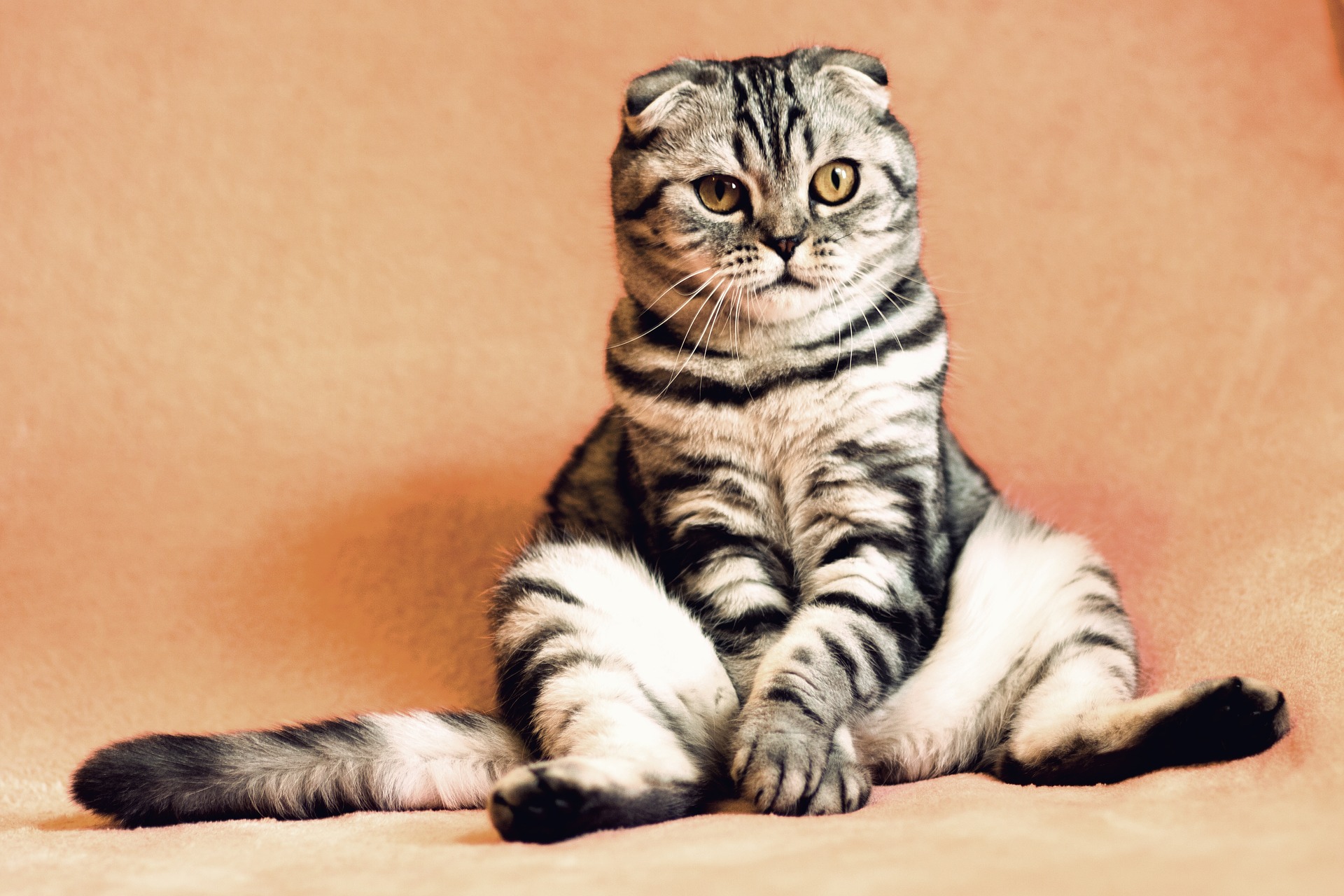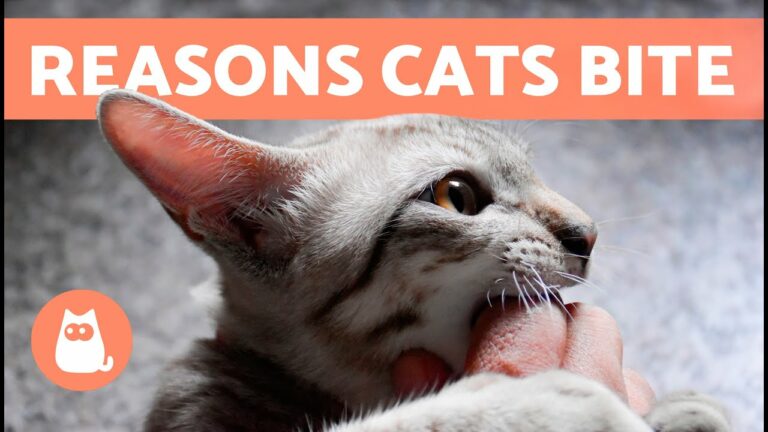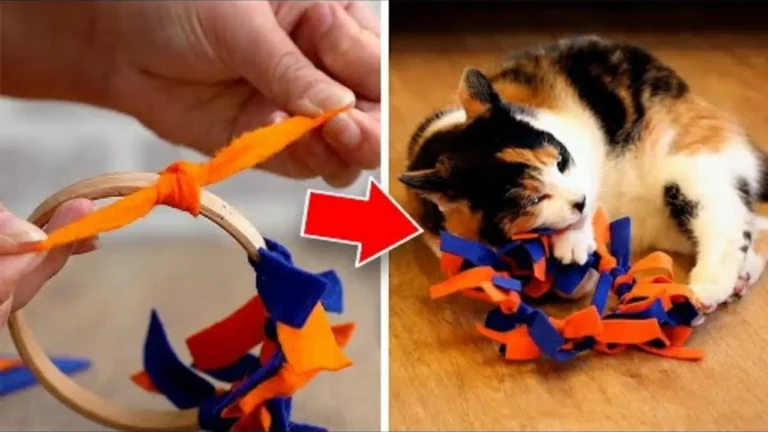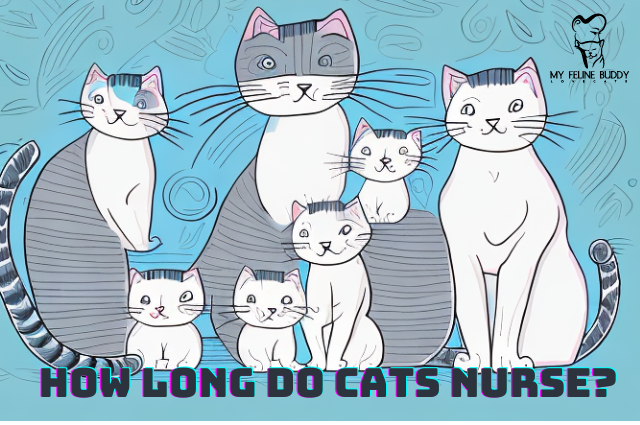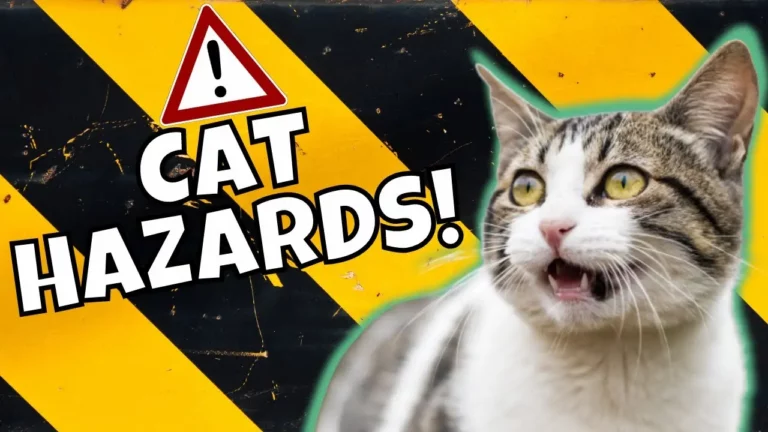Understanding Cat Sitting Positions: Insights Into Health & Mood
Ever caught your furry friend sitting in a position that left you scratching your head, wondering what on earth they’re trying to tell you?
Cats, with their enigmatic personalities, often communicate through their body language, including the myriad of ways they choose to sit.
From the classic sit to the curious loaf position, each posture holds clues to their mood, health, and comfort levels.
Understanding these sitting positions can transform the way we interact with our feline companions.
In this guide, I’ll walk you through the common
How To Understand Cat Sitting Positions
Identifying the Basics
First off, it’s crucial to recognize that each
But, there are common sitting positions that give us a glimpse into their moods and needs.
When my
This position is common during colder months or when they’re feeling insecure.
On the flip side, if she’s sprawled out on her back, exposing her belly, it’s a sign she feels safe and trusts me – though it’s worth noting, not all cats enjoy belly rubs, even in this seemingly vulnerable position.
Reading the Subtle Signs
Observing the ears and eyes in combination with sitting positions offers deeper insights.
Ears pointing forward while sitting up indicates alertness or interest. But, flattened ears, especially when accompanied by a low crouch, might mean she’s anxious or feeling aggressive.
Mimicking Human Behavior
Some cats adopt sitting positions that mimic humans, which is fascinating.
My
This behavior suggests not only comfort but perhaps a degree of curiosity or a desire to emulate their human companions.
Cat Sitting Positions and What Is Their Meaning
When observing my cats, I’ve noticed an array of sitting positions, each telling its own story.
Let’s jump into what these various poses could mean for your
Whether you’re a seasoned
The Loaf
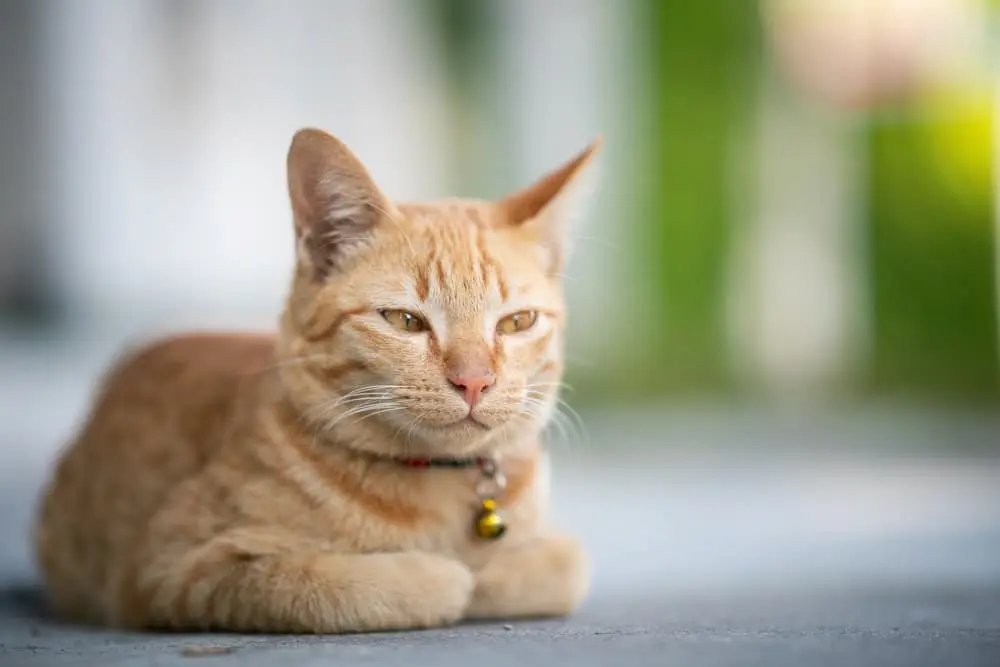
Spotting my
In this pose, cats are relaxed yet ready to spring into action if needed. It’s fascinating that even though it has a relaxed nature, the loaf can be a position of both comfort and cautious preparedness.
The Sphinx
The Sphinx position, where my

This majestic stance signifies that they’re engaged yet at ease, often seen when they’re keenly observing their surroundings.
I find that providing a comfortable spot where they can assume this pose often results in some of the most peaceful moments.
The Curled
When my
The curled position is a universal sign of a
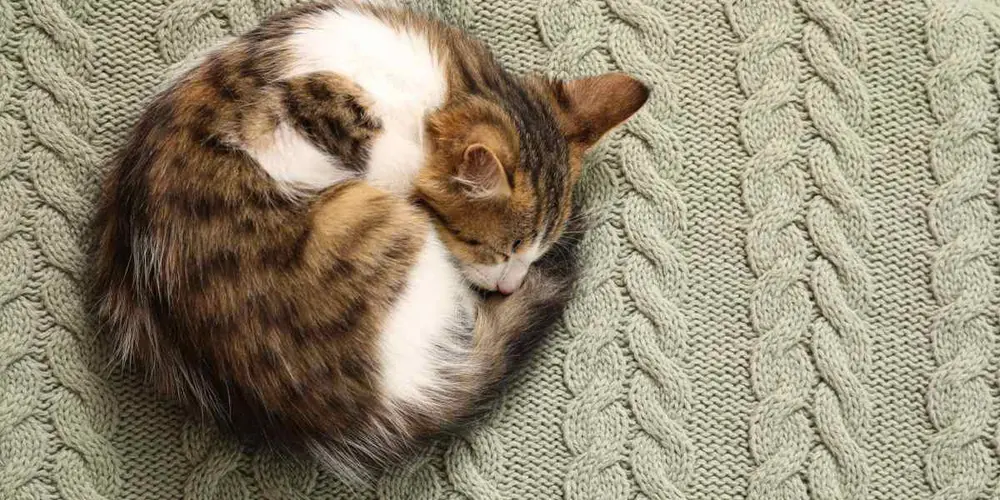
The Flopped
There’s hardly a more endearing sight than seeing my
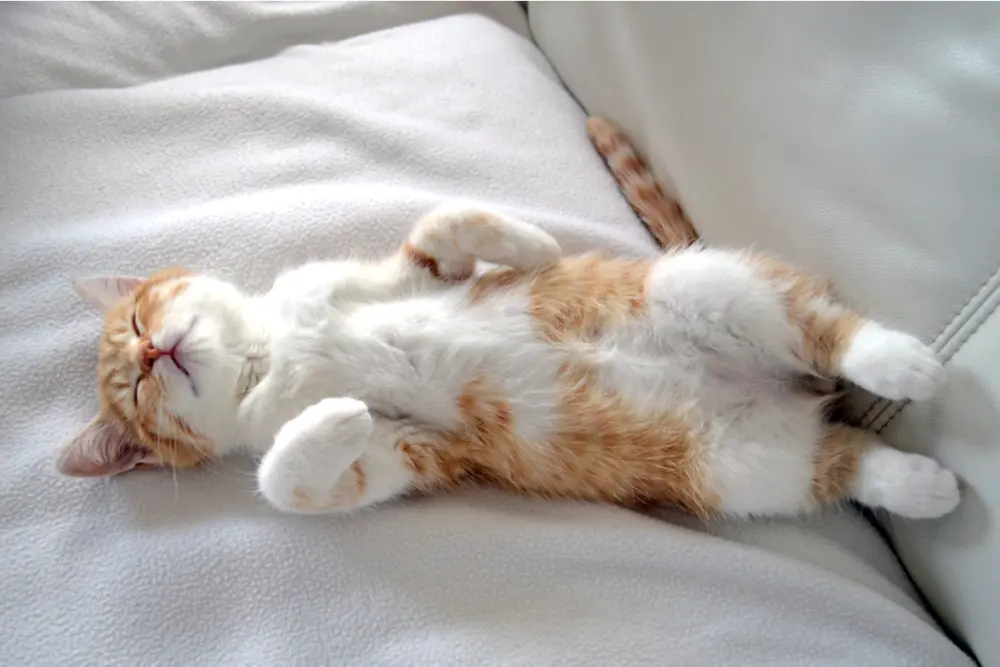
It screams comfort and utter trust in their environment. The flopped position often precedes a deep, relaxed sleep, and it’s a sign that they feel incredibly safe and loved.
The Kneading
Kneading, or “making biscuits”, involves my
This behavior, accompanied by a soft purr (or drooling), hearkens back to kittenhood and simply means they’re blissfully content.
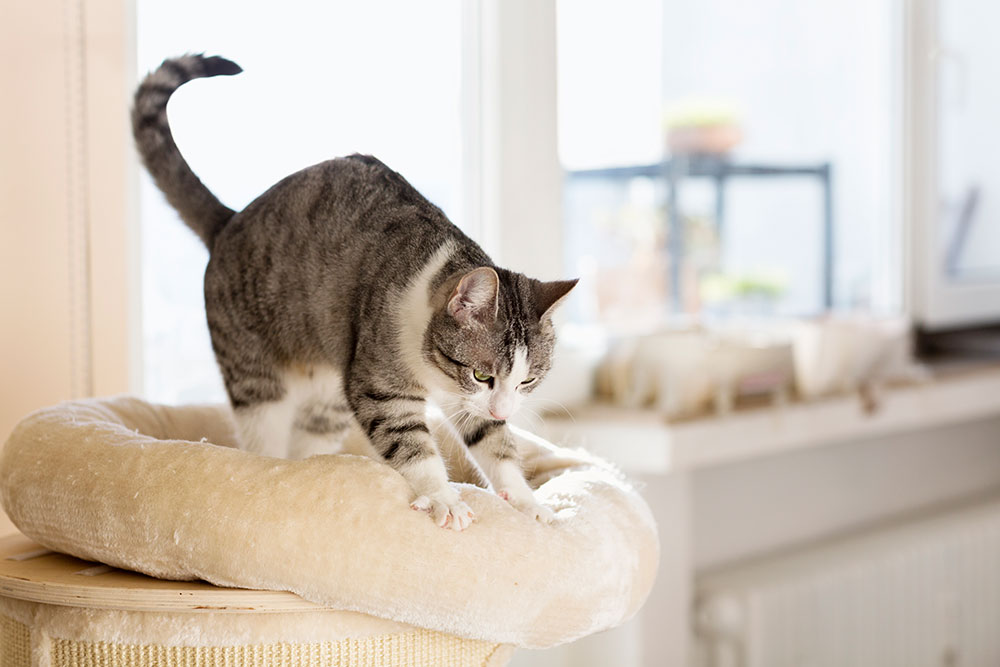
Encouraging this by providing a soft blanket or pillow can make them feel even more at home.
The Tucked
In the tucked position, my
This pose suggests they’re protecting themselves, perhaps feeling a bit insecure or chilly. I find that creating a warmer, cozier environment helps them relax more.
The Sprawl
Catching my

It’s a vulnerable position, showing they’re relaxed to the point of not worrying about defense. It’s particularly delightful to see, signaling complete serenity and openness.
The Acrobatic
Finally, the acrobatic encompasses those quirky, sometimes gravity-defying positions that leave me scratching my head.
Whether it’s dangling from the sofa arm or sprawled atop a narrow doorframe, these defy easy explanations but hint at a blend of curiosity, playfulness, and spatial experimentation.
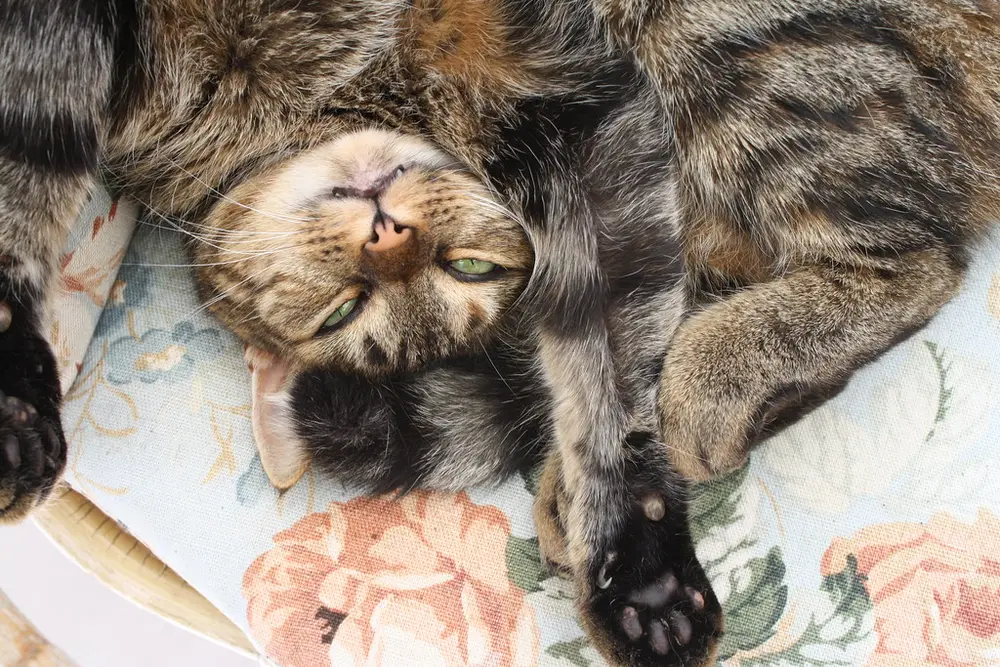
Encouraging play in safe, open spaces can help satisfy their acrobatic impulses.
Why Is My Cat Sitting Like a Person?
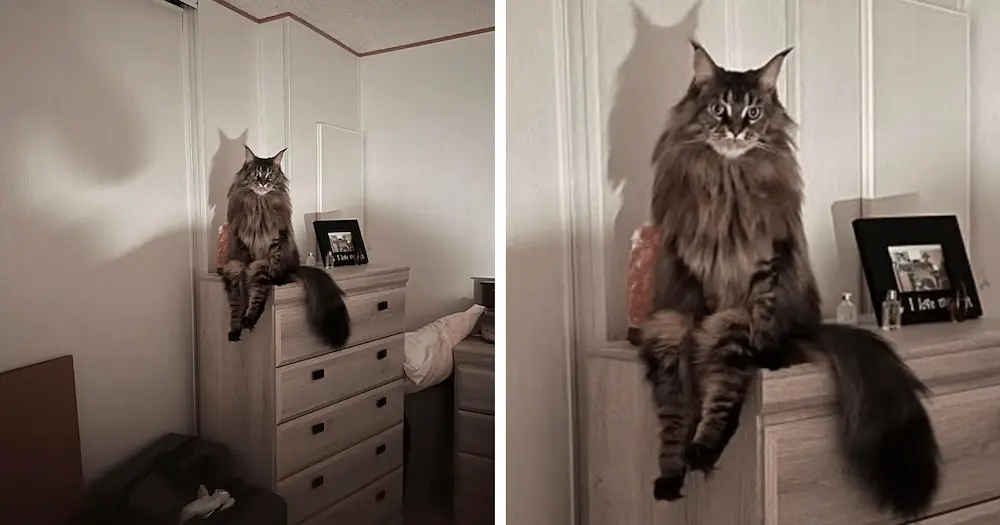
Have you ever caught your
As I mentioned earlier in this guide, this might be because your
But that’s not the only reason why they are sitting like humans. Here are some other ones:
Your Cat Is Grooming
Ever noticed your
It turns out this sitting-like-a-human posture allows them easier access to some hard-to-reach spots.
When my
Your Cat Is Showing Trust
When your
My
By exposing their underbelly to you while sitting up, they’re showing a vulnerable area, indicating they trust you not to harm them.
It’s their way of saying, “I feel safe with you.”
Your Cat Is Too Toasty
Finally, temperature plays a crucial role in how our cats choose to rest. When it’s particularly warm, my
The less body surface touching the ground or a cushion, the cooler they’ll feel.
This posture allows for air to circulate around their body more freely, helping them to regulate their temperature more effectively on those hot summer days. Make sure you are following the right guidelines and set up the correct temperature for cat in your household.
What If Your Cat Is Sitting In An Uncomfortable Position?
When my
Is she simply finding a new way to relax, or is she signaling discomfort?
Recognizing an uncomfortable position can be crucial in identifying if your
Signs of Discomfort
First, let’s look at the signs that indicate your
- Excessive Loafing: If your
cat sits in the loaf position more than usual, it might be trying to protect a sore paw. - Limping or Favoring a Paw: Noticeable difficulty in walking or an inclination to avoid putting weight on a specific leg.
- Excessive Grooming: Pay attention if your
cat starts licking a particular spot excessively. It could be a sign of pain or irritation. - Hiding or Aggressiveness: A
cat in pain might hide more or react aggressively when the sore spot is touched.
Practical Advice
Upon noticing any of these signs, my first course of action is always to observe.
I don’t rush to conclusions after one instance of odd sitting but keep an eye out for patterns. If the behavior persists, consulting a vet becomes essential. It’s better to be safe and ensure they’re not suffering in silence.
Also, I make my home more comfort-centric.
Whether it’s providing extra soft bedding or ensuring their litter box is easily accessible without having to jump or climb, small adjustments can make a big difference in their comfort levels.
Finally, engaging in gentle play can help. Sometimes, a little bit of movement can assist with minor discomforts, but I always make sure it’s light and stop if my
Remember, our feline friends can’t tell us when something’s wrong.
It’s up to us to stay observant and responsive to their needs, keeping the bond strong and our pets happy and healthy.
Wrapping Up
Understanding our feline friends’ sitting positions can tell us so much about their health and happiness.
It’s fascinating how something as simple as observing how they sit can deepen our bond with them.
Remember, while it’s fun to decode their posture, it’s crucial to stay alert for any signs that might indicate discomfort or health issues.
I’ve found that making small adjustments to their environment and keeping an eye on their behavior goes a long way in ensuring they’re not just comfortable but thriving.
And when in doubt, a quick check-up with the vet can provide peace of mind.
So next time you catch your
It’s one of the many joys of sharing our lives with these enigmatic creatures.
